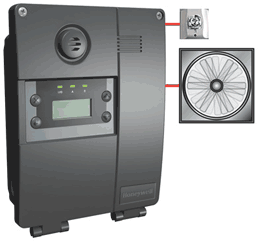Manufacturing & Fabrication
Industrial facilities for manufacturing and metal fabrication require complex systems and often involve the use of different gases for the various steps in the fabrication process. While there are several kinds of processes for manufacturing and fabricating metals, the most common are:
- Cutting
- Folding
- Machining
- Punching
- Shearing
- Stamping
- Welding
- Chemically etching
- Electro-plating
- Coating
Some of the gases involved with these fabrication processes include acetylene, chlorine, propane, argon, hydrogen, nitrogen, oxygen, and others.
When considering workplace hazards at manufacturing and fabrication facilities the first risks that typically come to mind are those associated with operating the manufacturing machinery and equipment. However, the use of the aforementioned gases in the fabrication process also presents hazardous risks of exposure, and some of these gases are highly combustible as well.
Gases Found in Manufacturing & Fabrication Facilities
In addition to using gases in the fabrication process, industrial manufacturing and metal fabrication facilities must operate with equipment that is often powered by fuels that let off gases. To comply with OSHA’s standards for ventilation and protection in welding, cutting, and heating for metal fabrication and ensure worker safety, you should monitor the level of hazardous gases which may include:
- HCN
- O² (Oxygen)
- Phosphine
- Combustible Gases (Lower Explosive Limit LEL)
The Risks
Hydrogen cyanide (HCN), is a colorless, extremely poisonous and flammable liquid that is produced on an industrial scale. It’s highly combustible because it boils at 25.6 °C (78.1 °F), which is only slightly above room temperature. This is of course very dangerous for your workforce as well as for manufacturing operations, and the gases should be closely monitored with highly accurate sensors to ensure safety and mitigate risks.
Oxygen is what makes combustion possible in many manufacturing processes, supporting oxyfuel cutting operations and sometimes used as the plasma cutting gas on carbon steel (with Hafnium electrodes). When stored at high pressure, such as from a cylinder, oxygen gas can react violently with common materials such as oil and grease. OSHA has specific standards for the use and storage of oxygen gas in metal fabrication applications.
Phosphine is both highly combustible and toxic. Concentrated phosphine can be explosive in air and can even autoignite at near ambient temperatures. Accidental exposure to phosphine or aluminum phosphide contained in fumigation materials can be fatal. Phosphine can be absorbed by inhalation, and acts as a respiratory poison, affecting how the body transports and uses oxygen.
The lower explosive limits (LELs) should also be monitored to detect any heightened levels of any combustible gases. This is because each gas has its own limit of concentration before the air becomes combustible. Each LEL sensor must be calibrated to detect specific combustible gases, since the lowest percentage for LEL will vary for different gases. It’s necessary to be conscious of the equipment in the manufacturing facility in order to set the sensors to detect the right type of gas, and make sure that you’re monitoring all of the dangerous gases that could be present.
While most people are familiar with hazards from combustible gases such as propane, acetylene, and natural gas the hazards from oxygen and oxygen-depleting gases are often overlooked. When gases like nitrogen, carbon dioxide, or argon leak from a compressed tank the oxygen in the room can become quite quickly displaced. If the concentration of oxygen decreases even slightly (by just 1 – 2 percent), people immediately begin to feel the effects. In oxygen environments of 15 – 19 percent, healthy individuals are unable to work strenuously and their coordination may be affected. Finally, when oxygen gases leak into an enclosed area, it can make all materials more combustible, which is it’s own hazard.
The hazards from oxygen and oxygen-depleting gases are often overlooked, and it is particularly important that the appropriate sensors are installed and maintained in medical gas storage rooms where the giant gas cylinders are stored. A leak of nitrogen, carbon dioxide, or argon can displace the oxygen in a room quite quickly, and if the concentration of oxygen decreases even slightly (by just 1 – 2 percent), people immediately begin to feel the effects. Even healthy individuals will see their coordination and judgement affected.
Contact Us
Please fill out the form below and we will be in touch.



